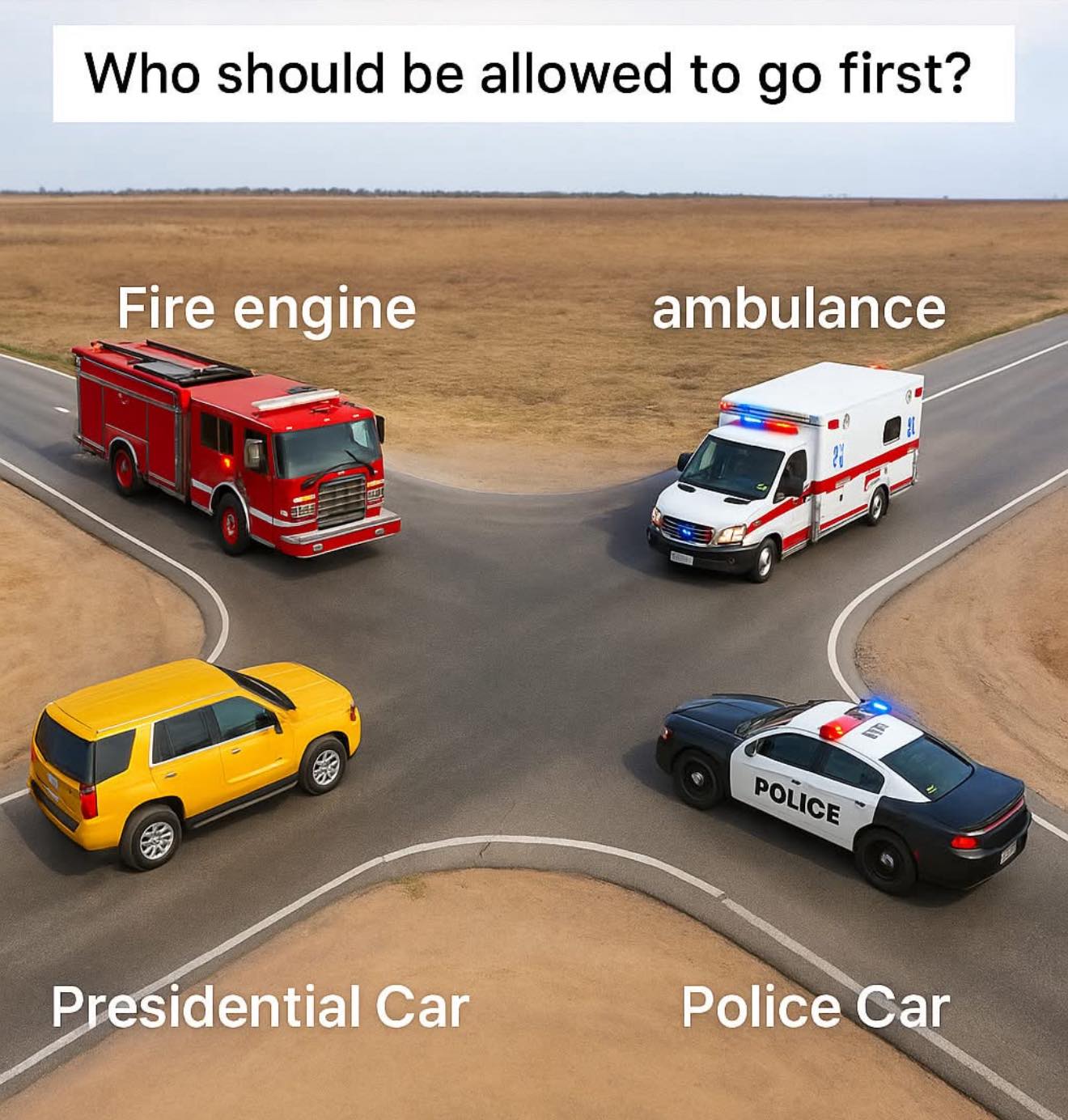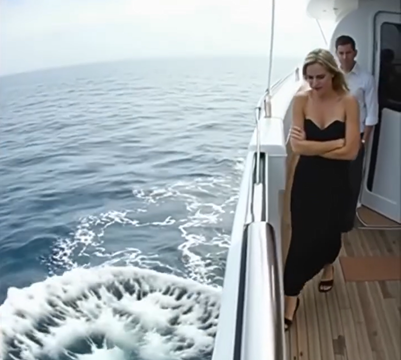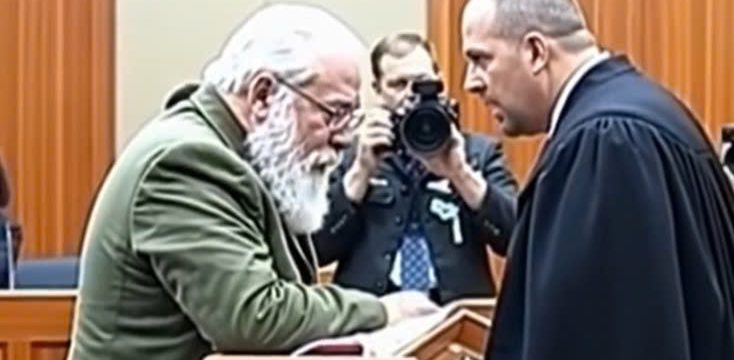Imagine this scenario: you’re at a deserted four-way intersection, way out in the middle of nowhere. There are no traffic lights, no stop signs, and absolutely no one around to direct traffic. Suddenly, four vehicles pull up to the intersection at the exact same time—each coming from a different direction.

Now, here’s where it gets interesting. These aren’t just ordinary cars. You’ve got an ambulance, a fire engine, a police cruiser, and a presidential vehicle all facing off at this silent crossroads. Sounds like the start of a blockbuster movie chase, right? But there’s no action scene here—just one big question: which vehicle is legally allowed to go first? Only one has the right of way. And while it might seem like an obvious answer, most people get this wrong because they focus on power or status instead of actual traffic laws. It’s tempting to say the President’s vehicle should take the lead. After all, we’re talking about the leader of the country, someone constantly surrounded by security, and likely traveling with top-level clearance.
But in this puzzle, status doesn’t guarantee priority. In fact, it has little to do with it. Others might vote for the police car, thinking law enforcement gets the ultimate say in traffic. Some might lean toward the fire engine, assuming fires pose more of an emergency. But the real answer lies in U.S. traffic law and the nature of each vehicle’s responsibilities when responding to emergencies. Let’s break it down one by one. Starting with the ambulance—if it has its sirens on and is actively responding to an emergency, it has the highest priority at an intersection like this. That’s because ambulances are usually racing to or from a situation where a life is on the line. Every second matters when you’re transporting someone in need of urgent medical care.
In this context, the ambulance goes first. Now let’s look at the fire engine. While fire trucks respond to extremely serious situations—fires, rescues, hazardous material spills—they’re next in line after ambulances. Unless the fire engine is dealing with a human life in immediate danger, traffic laws typically rank it just below an ambulance. So if both arrive simultaneously, the fire engine must yield to the ambulance. Moving on to the police cruiser, which plays a vital role in emergency response and law enforcement. However, unless that cruiser is involved in an active pursuit or is leading a motorcade, it must give way to both ambulances and fire trucks.
Police officers enforce the rules, but they also follow them, especially in scenarios where other emergency services are responding to life-or-death situations. Finally, there’s the presidential vehicle. This is where the puzzle tricks many people. While the President certainly travels with a high level of security and often has entire motorcades clearing the road ahead, that only applies when the motorcade is active and official. Without those security measures in place—like escorts, blocked intersections, or police detail—the presidential vehicle is treated just like any other car under the law. So in an uncontrolled intersection, it must wait until emergency vehicles have passed. Based on these facts, the legal order of priority at the intersection is clear.
First comes the ambulance, followed by the fire engine, then the police car, and lastly, the presidential vehicle. This sequence reflects the urgency of each vehicle’s duties, not the power or status of the person inside. At the end of the day, when lives are at stake, paramedics take the lead, firefighters follow closely behind, police officers support both, and even the President has to wait their turn. So, now that you know the correct answer, how did you do? Did you let the title or uniform fool you? Or did you keep your cool and think through the actual rules of the road? Drop your guess in the comments, and see how your answer stacks up against others.
Share this with a friend and test their logic too. These brain teasers aren’t just fun—they’re a great way to sharpen your thinking, challenge your instincts, and remind yourself that sometimes, the right answer isn’t the one that screams the loudest but the one that follows the law. Keep exploring more puzzles like this one, and remember: smart thinking always beats snap judgment.





